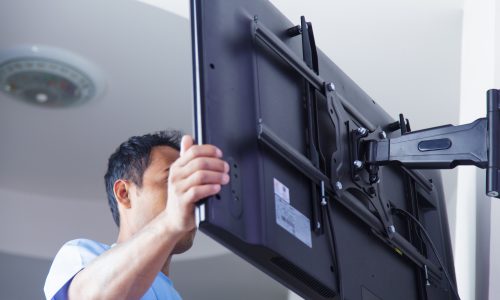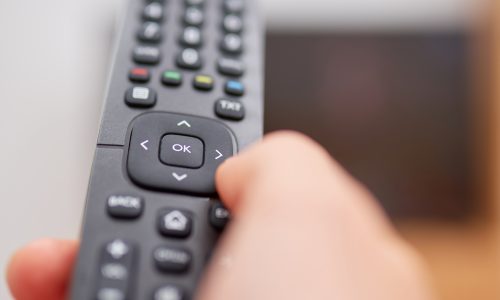Stay In The Know With The Best Radar Detector
We looked at the top 12 Radar Detectors and dug through the reviews from 27 of the most popular review sites including and more. The result is a ranking of the best Radar Detectors.

Our Review Process
Don't Waste Your Money is focused on helping you make the best purchasing decision. Our team of experts spends hundreds of hours analyzing, testing, and researching products so you don't have to. Learn more.
Our Picks For The Top Radar Detectors
- 1. Whistler CR73 Corded Radar Detector
- 2. Valentine One Radar Detector
- 3. Uniden R3 Radar Detector
- 4. Radenso Automatic Long Range Radar Detector
- 5. Cobra Digital Signal 2-In-1 Dash Cam Radar Detector
- 6. Escort Passport S55 Radar Detector
- 7. ESCORT MAX360 Radar Detector
- 8. Escort iX Radar Detector
- 9. BlendMount Radar Detector
- 10. Baocanshe LED Display Laser Radar Detector
- 11. Cobra RAD 450 Radar Detector
- 12. Cobra Radar Detector
If you're looking for a radar detector that offers 360-degree protection, this model is your best bet. It's outfitted with a digital display and comes with voice alerts, so you always have enough time to adjust your speed. The device also uses a special technology to eliminate false positives, which are common with so many other models on the marke...
Full CoverageThis radar detector comes with a windshield bracket kit for easy installation.
Advance notice can be very handy when you're using a radar detector. and in that area, the Valentine One excels. You'll also get high sensitivity, which is helpful in alerting you to speed-detecting radar.
Highly SensitiveA highly sensitive radar detector to alert you to speed-detecting radar all around.
You'll enjoy the highest level of detection when you opt for this radar detector. It's designed with an advanced false alert filtering system and gives voice warnings, so you can use the unit hands-free. The multi-colored display is also easy to read at a glance.
Handy and EffectiveWith this radar detector, you'll receive a handy carrying case, a single-suction bracket, a dual-suction bracket and a cigarette adapter.
If you're looking for a radar detector that can monitor several miles out, this model is an excellent choice. It also comes with the option to mute alerts when driving under the speed limit. The mount can be released with just the press of a button, allowing you to quickly move the unit from one car to another.
Storage Case IncludedThis radar detector is ready to use out of the box. Simply plug it in and you're good to go.
Buying Guide
A speeding ticket can put a serious damper on your day. Not only will you face a fine of $150 on average, but you’ll also have to deal with the drama of being pulled over by a police officer. Although smartphone apps like Waze can alert you that a police officer is coming up, do you really want to trust your fellow travelers to report one?
The best solution remains the same thing people used to avoid speeding tickets before we had smartphones. A radar detector picks up the emissions produced by police officers’ devices. Today’s top radar detectors are advanced enough to get around the many issues consumers faced in the past with radar detectors. They’ll find the band most often used by officers and filter out the common causes of false alarms.
If you don’t want to give up the crowdsourced approach to traffic alerts, don’t worry. Some radar detectors sync up with an app that helps you access the power of the crowd. This combination of information will ensure you have the best chance possible of knowing when your speed is about to be checked.
One problem with having a radar detector is that the police may be able to detect you have one on board. A device called Spectre can detect radar detectors and potentially lead to a ticket, depending on where you live. In Virginia and the District of Columbia, use of radar detectors is illegal. You can turn your detector off once it sends an alert since you’ll be slowing down anyway. Once you’re safely past the police officer, you can then turn it back on. There are also some radar detectors that claim to be undetectable to Spectre detectors.
Of course, the most important feature is accuracy. It’s important to look for a radar detector that captures all suspected radar incidents without routinely setting off false alarms. Once you have your detector, there are tweaks you can make to ensure it’s as accurate as possible.
Why we recommend these radar detectors?
Products Considered
Products Analyzed
Expert Reviews Included
User Opinions Analyzed
Our experts reviewed the top 12 Radar Detectors and also dug through the reviews from 27 of the most popular review sites including and more. The result is a ranking of the best of the best Radar Detectors.
DWYM is your trusted roduct review source. Our team reviews thousands of product reviews from the trusted top experts and combines them into one easy-to-understand score. Learn more.
What to Look For
- As valuable as radar detectors are, it can also help to have fellow travelers alerting you to police officers ahead. Some models connect to a smartphone app that allows users to report all radar and laser encounters, with the information reported as alerts through the detector.
- Accuracy can be tough to quantify, but some detectors use technology that is often implemented in high-end radar detectors in order to reduce false alarms.
- Range is also important in a radar detector. Some models notify drivers well in advance of a potential radar incident. They have rear-facing antennae that can also keep a lookout for any radar behind you as you travel.
- False alarms are an ongoing issue with radar detectors. Many models have a bad habit of picking up every hint of radar. Some don’t mute DSP and GPS signals, which means you’ll probably be alerted to every radar you pass.
- One popular feature to look for is directional arrows, which show you the direction of the radar in relation to your car. However, the arrows can have a slow reaction time, making them not as useful.
- Readability is important in your radar detector. Alerts mean nothing if you can’t decipher them. Consider controls that are clearly labeled, with functions that are easy to understand.
- You don’t have to blow your savings to protect yourself against speeding tickets. Though radar detectors can vary greatly in price, you’re sure to find one that fits your budget.
More to Explore
Speed limits date all the way back to the 1600s when the colony that later became New York passed a law that wagons, carts and sleighs could not be operated at a gallop. In 1901, Connecticut became the first state to pass a speed limit, which was 12 mph in cities and 15 mph on more rural roads. A national speed limit was finally set in the 1970s to help reduce the impact of high fuel prices. In 1974, a speed limit of 55 mph was set nationwide, at which point traffic fatalities began falling. By 1983, they’d dropped from 4.28 million to 2.73 million.

























